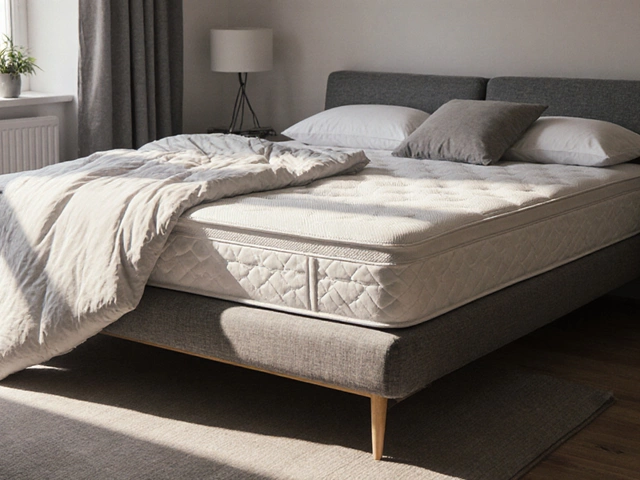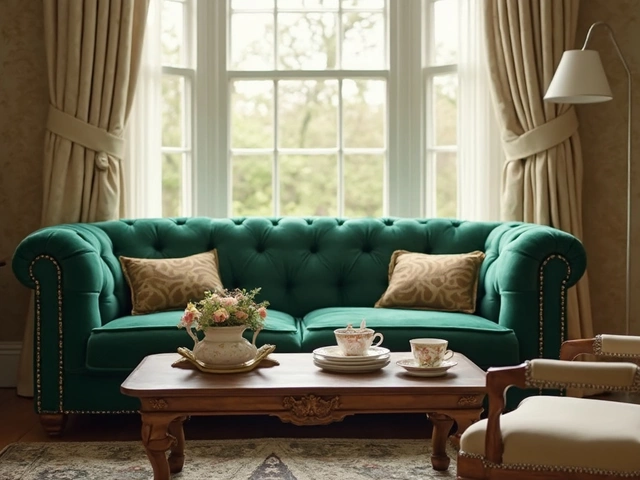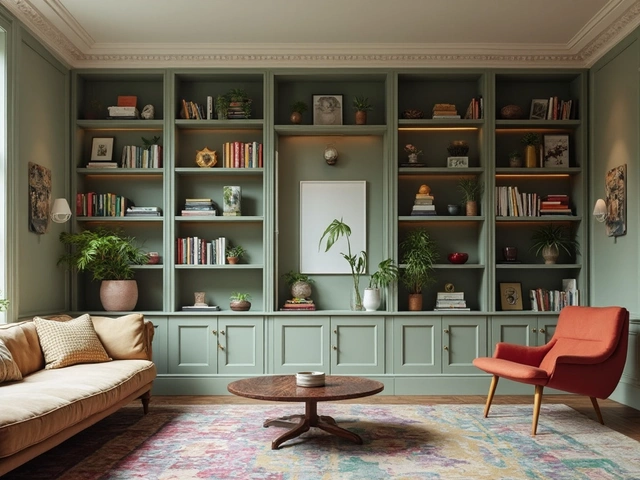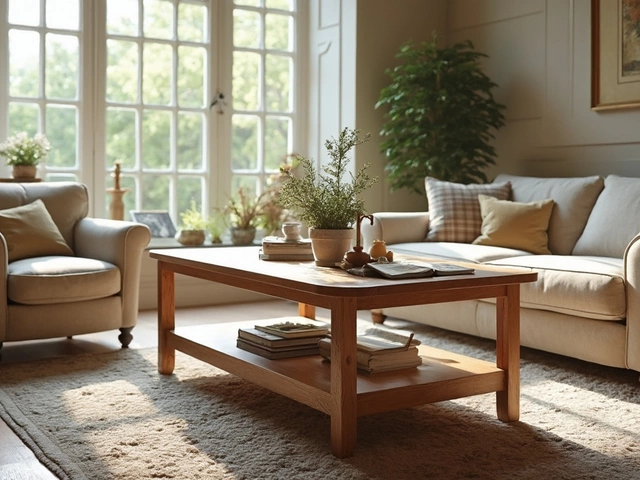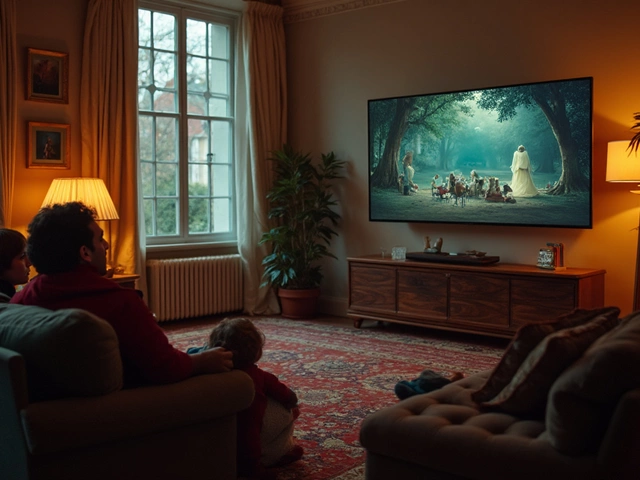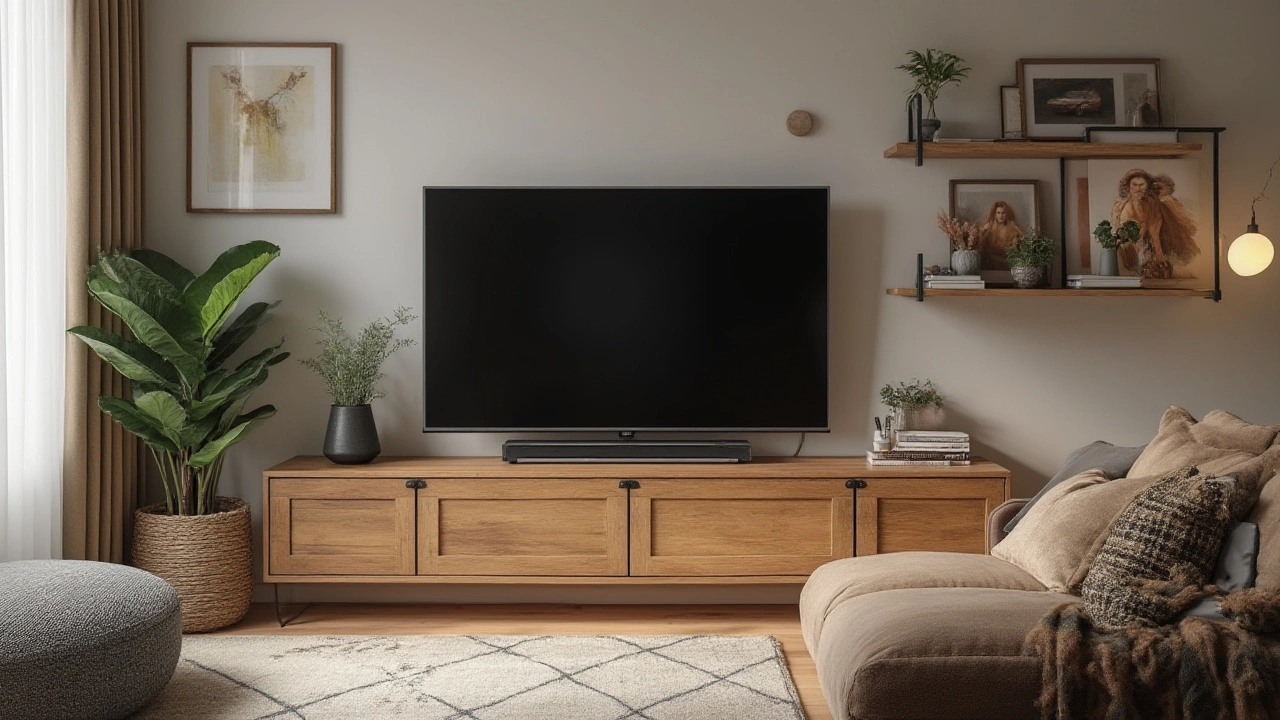 14
Jul,2025
14
Jul,2025
Picture this: you finally get that massive flat-screen TV you’ve been saving for, and now you need to figure out the stage it’ll sit on. Maybe you’re wondering if the stand needs to be bigger or if a snug fit is just as good. It’s not only about looks—a lot goes into making your living room both stylish and safe. No one wants an expensive TV teetering on a tiny stand, right?
The Basics: Why TV Stand Size Matters
If your TV stand is too small, not only does it look awkward but it could also turn into a safety hazard (hint: these screens aren’t as light as they look). The general rule used by most designers and retailers is that your TV stand should be at least a couple of inches wider than your actual TV—ideally, 10 to 20 centimeters (about 4 to 8 inches) on each side. This isn’t just a fashion rule; it’s common sense. When the stand is wider than the TV, it anchors your setup visually, making the screen look centered and balanced rather than ready to topple over with a gust of wind or a visit from your overly enthusiastic nephew.
Bigger isn’t always better, though. Ever seen a tiny TV lost on a massive console? It throws off the whole look. In Melbourne’s compact apartments or cozy bungalows, an oversized stand eats up much-needed space, making your room feel cluttered. The best TV stands are like good shoes: just the right fit, with a smidge of extra space. And if you like numbers, here's a table for quick reference:
| TV Size (inches) | Recommended Stand Width (cm) |
|---|---|
| 32 | 90-110 |
| 43 | 110-130 |
| 55 | 130-150 |
| 65 | 150-170 |
| 75 | 170-190 |
Every centimeter counts, especially in city apartments where every corner matters. Without some breathing room, even the fanciest TV can end up looking like an afterthought.
Stability & Safety: What Happens If Your Stand Is Too Small?
Let’s get real—new TVs aren't just expensive, they’re also heavier than they look (even with slimmer frames). Knock one over, and you’re looking at a thousand-dollar oops. A stand that’s too small means a higher risk of tipping, especially with curious kids and wiggly pets around. Statistically, household accidents involving TVs have dropped since people stopped putting massive tubes on rickety carts, but hospitals still report injuries from falling TVs every year.
This is where the size of the stand makes a real-world difference. The extra width acts as a buffer, protecting your TV from accidental bumps. Proper stands are often designed to hold well over the weight of even the largest TVs, but only if the weight is distributed properly along the base. Some users admit to placing big screens on dressers or old chests, but these aren't always designed for that specific purpose and might create hidden instability.
Safety pros will tell you that for homes with children or pets, a wider stand couples well with wall anchors or anti-tip straps—giving you extra peace of mind. Plus, most Australian rental apartments require you to avoid marking walls, so a correctly sized stand is even more important if you can’t mount your TV. Bottom line: err on the larger side if you’re not sure, and make sure any stand you buy is certified to handle your TV’s weight.
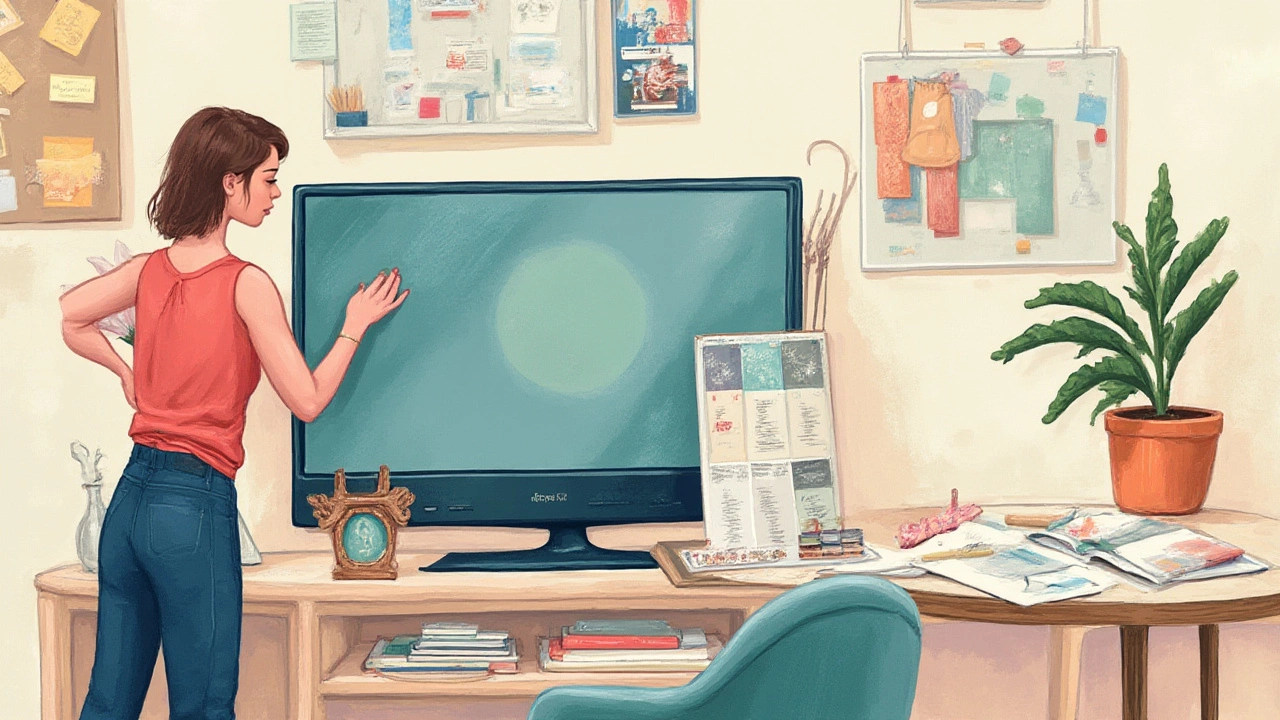
Style & Proportion: Getting the Right Look
The size of your TV stand directly shapes how polished your living room feels. Designers talk about “visual weight.” That’s pretty much how your brain feels about the size-match between your TV and the stand under it. A stand wider than your TV frames it nicely, making everything feel intentional.
If you’re chasing a minimalist vibe, sleek stands with clean lines do the trick, but don’t let the minimalism make your setup look flimsy. Some Scandinavian-style consoles come with plenty of width but less height, which gives the TV a grounded feel without becoming bulky. Some people like to match their TV width precisely to the stand—but if you do, make sure the edges don’t align exactly, or the setup might look unbalanced.
One emerging trend in Melbourne goes for layered looks—people mount their TVs on the wall and pair them with a broader, lower stand. The result? Plenty of space to show off a few vinyl records or a sculptural lamp on either side, and the TV still takes centre stage. If you're mixing floating shelves or cabinets with your setup, consider how their lines interact with the stand below to create harmony rather than chaos.
Practical Tips for Measuring and Placement
Don’t just eyeball the space—grab a tape measure. Measure your TV’s actual width, not the diagonal number advertised on the box. A 55-inch TV actually measures about 123cm wide. Look up your model’s specific width online if you don’t want to fuss with a tape.
Now give yourself a wiggle buffer. Here’s a step-by-step for working out the proper size:
- Measure the width of your TV (without the stand or feet, unless you’re planning to keep them on).
- Add at least 20cm (8 inches) to that number—10cm (4 inches) on each side is a good rule.
- Check your available space: measure your wall and make sure there’s enough room to accommodate both stand and side clearance. If you’re tight on space, try corner TV stands or stands with built-in storage underneath.
- Think about height, too. The middle of your TV should be at eye level when you’re seated. For a typical lounge, that means about 105-110cm from the floor to the center of the screen.
- Leave room for cables, powerboards, and any soundbars underneath or in front of the TV. Future you will thank current you for not making cable spaghetti a permanent design feature.
If you want bonus points: look up the recommended TV height based on your sofa’s seat height. For example, if your sofa seat is at 45cm and your eyes sit at 95cm when seated, aim for the TV middle to line up at roughly 95cm from the floor.
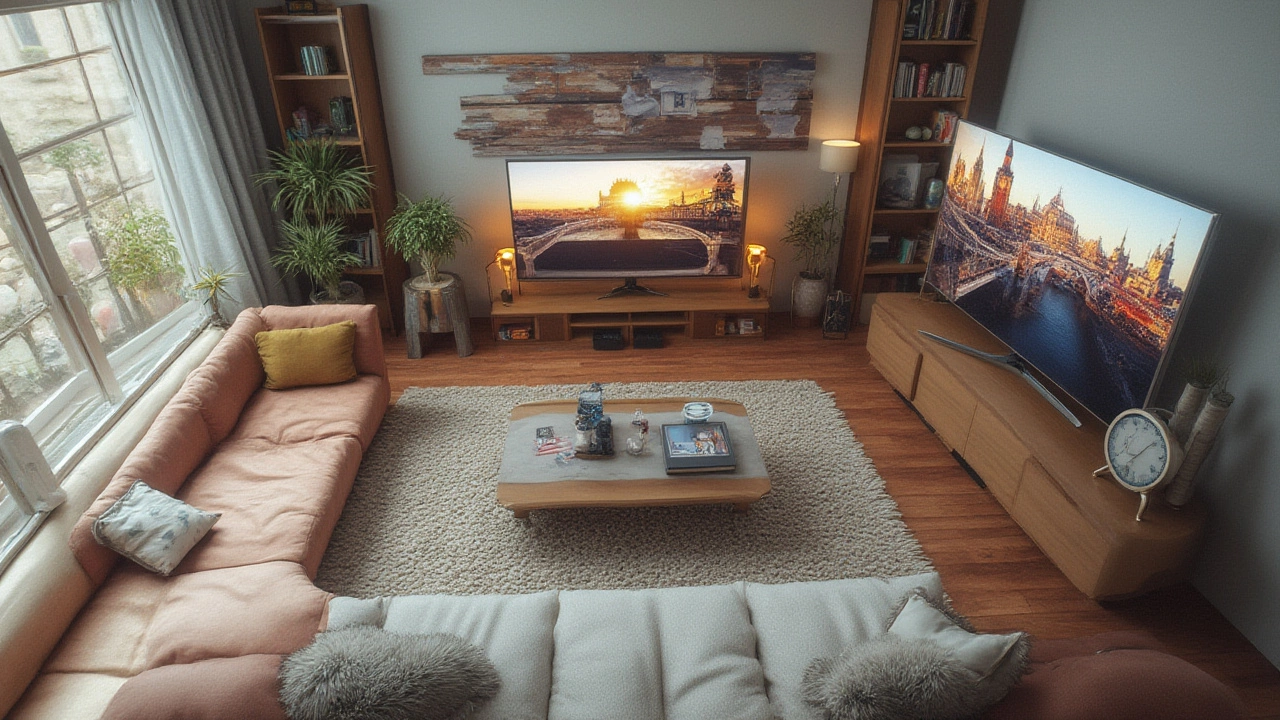
Storage, Extras, and The Ultimate TV Experience
The right TV stand doesn’t just hold your screen—it can completely transform how you use your space. Think about all the extras: gaming consoles, remotes, speakers, streaming sticks, routers. A slightly bigger stand means more storage, fewer visible cords, and less clutter.
Storage-wise, you’ll find plenty of options: some stands offer drawers for DVDs or remote controls, others give you open shelving for game consoles or streaming boxes. If you’ve got smart home hubs or a sound system, you’ll need a spot for those too. Just be careful not to overcrowd—good design keeps things tidy, not cramped.
On the style front, matching your stand to the rest of the room pays off. Timber finishes are huge in Australia, especially Melbournian homes with that warm, relaxed vibe. Matte black is a growing trend for industrial looks, while bright whites or pastel hues can lighten up a smaller room.
Don’t forget airflow. Electronics get hot, especially during those sticky summer days. Choose a stand that allows your gear to breathe. If you’re a serious gamer or binge-watcher, open shelves or built-in cable holes are more than just convenience—they can actually help your devices last longer.
All this boils down to one thing: your TV stand should be a little wider than your TV, sturdy enough to support it, and well-matched to your space and style. Picking the right one is about balance—between size, security, and how you want to use your living room. Give your setup a little extra space on either side, and you’ll thank yourself every time you settle in for movie night.
